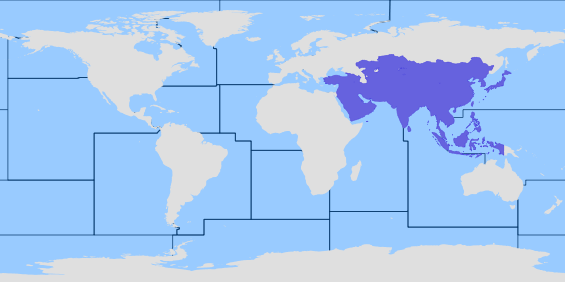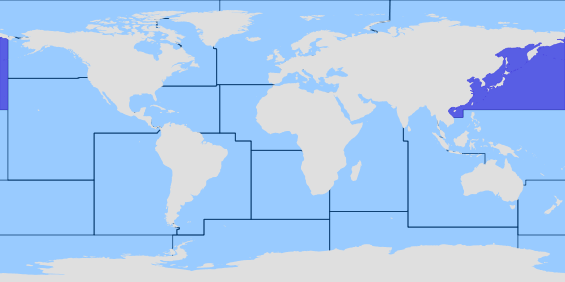angielskiDiagnosis: Upper posterior part of the dorsal fin with a yellow-orange spot with vague outlines on the last two-five interray membranes; a narrow red-vinous fringe 1-2 mm wide along the upper edge of the fin; from the fin base upwards there are 4-5 rows of small round spots with dull fringing; the upper row of spots begins from the base of the first unbranched rays and continues upwards to the middle of the fin, then upwards to the middle of the fin; then continues almost parallel to the lower rows. The posterior edge of dorsal fin is wide, often with deep emarginations or rounded notches. There are clear bright orange sinuous bands among rows of scales; scales are average-sized. Upper jaw reaches beyond anterior eye edge and reaches the pupil. Dossal fin base is large. Body is relatively deep, slightly cylindrical, on an average 21% AC. There are no teeth on vomer and tongue (Ref. 57753).
Zobacz tłumaczenie
Przetłumaczone z angielski przez BING
Niniejsze tłumaczenie ma charakter czysto wskazujący: z uwagi na ograniczoną jakość tekstu źródłowego, opisy morfologiczne są dostępne tylko w języku angielskim w wersji beta systemu. Informacje w innych językach zostaną udostępnione w kolejnych wersjach.
polskiDiagnoza: Górnej części tylnej płetwy grzbietowej z żółto pomarańczowy miejscu z niejasnych przedstawia na ostatnie dwa-pięć interray membrany; wąskie frędzle czerwony Krogulec 1-2 mm szerokości wzdłuż górnej krawędzi ogonowej; do góry od podstawy płetwy istnieją wiersze 4-5 małe okrągłe plamy z frędzle nudne; Górny wiersz miejsca zaczyna się od podstawy pierwsze promienie unbranched i nadal do góry na środku fin, następnie do góry na środku fin; następnie nadal prawie równolegle do dolnej wierszy. Tylnej krawędzi płetwy grzbietowej jest szeroki, często z głębokim emarginations lub zaokrąglone nacięcia. Istnieją jasne jasne pomarańczowe kręty zespołów między rzędy łusek; wagi są średniej wielkości. Górnej szczęki osiąga poza krawędź przedniej oka i dociera do ucznia. Fin dossal bazowy jest duże. Ciało jest stosunkowo głębokie, lekko cylindryczne, na średniej AC 21%. Istnieją nie zęby na vomer i język (Ref. 57753).
 Obraz niedostępny
Obraz niedostępny
